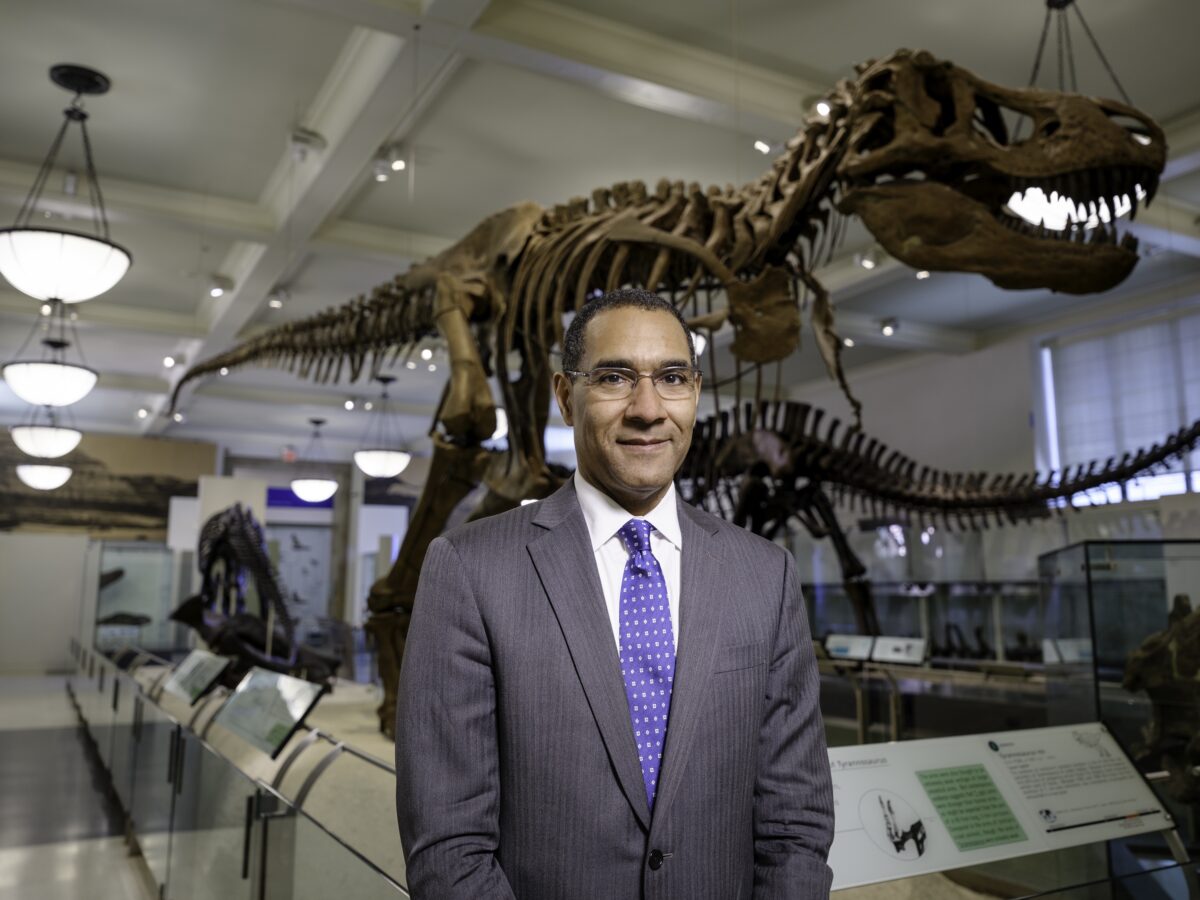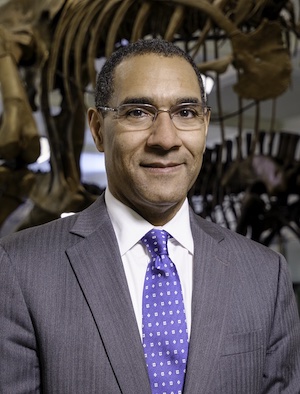By Sean Decatur (ΦBK, Swarthmore College)
President of the American Museum of Natural History in New York City
. . . . . . . . . . .
Each day brings news about existential threats to our planet and its inhabitants: unprecedented fires and weather events, loss of habitats and resulting erosion of biodiversity, and new threats to our health and well-being. And this is just the news involving science and the natural world; we also live in a moment of declining trust in our academic institutions, of increasing political, social, and economic polarization, and a weakening of democratic norms.
In this context, I find it remarkable that each day, well before the official opening time of 10 AM, lines of visitors begin to form outside the doors of New York’s American Museum of Natural History (AMNH), my workplace since April 2023. The queue is diverse, ranging from international tourists representing nearly every continent to schoolchildren on field trips to visitors from all parts of the city. When the museum opens, the largest crowds flock to the headline exhibitions, including the dinosaur fossils, the iconic dioramas of mammals from North America, Africa, and Asia, the Hayden Planetarium, and the extensive collection of gems and minerals. But I am thrilled by the number of folks who visit some of the smaller, quieter halls of the museum, from the artifacts of the arctic expeditions of Lincoln Ellsworth to the displays on the farms and forests of New York State.
The AMNH was founded more than 150 years ago with the mission to discover, interpret, and disseminate knowledge about human cultures, the natural world, and the universe. More than a century on, I find hope in the simple observation that, at a time when our planet and its inhabitants are under threat, a place exists where diverse audiences come together on common ground in an institution dedicated to inquiry, discovery, and communication.
I came to my position as president of the AMNH from an academic background, having spent nearly a decade as president of Kenyon College, and before that about 18 years as an academic dean and chemistry professor at two other liberal arts colleges (Oberlin and Mount Holyoke). In my own life, and in the lives of my students, I have seen the impact of an education in the liberal arts. My liberal education prepared me to adapt from being a research chemist to a teacher to an academic leader to my current position as the leader of a cultural institution. But more importantly, it has given me and my students the ability to look at complex and important problems from a range of angles and perspectives, and it has enriched our lives by transforming us into lifelong learners.
I am no longer in the classroom, but I continue to witness the impact of liberal learning every day at the AMNH. When I walk through the halls, what I hear most often from the visitors are questions. At its best, the museum communicates about science by modeling the scientific process itself, demonstrating how each new observation simultaneously answers a set of questions while generating many more. Most visitors will leave the museum with a few new facts about the natural world, or perhaps even a sense of awe and wonder; but they will also go home with a renewed sense of curiosity about our world and its challenges, coupled with an understanding of how the scientific process addresses that curiosity and finds solutions to pressing problems.
In contemporary discourse around education policy and curricula, some feel an irresistible urge to separate the sciences from the humanities, even giving science, technology, engineering, and mathematics its own acronym (STEM) and in many cases placing this clustering in opposition to the “liberal arts.” This is ahistorical—the core of scientific thinking has been an essential part of the liberal arts in their original, ancient forms (arithmetic, geometry, astronomy, and logic were all considered essential education for free citizens). But, beyond this, separating STEM disciplines from the liberal arts denies the fundamental reality that the effective practice of science depends on the effective communication of scientific ideas, which in turn depends on the skills shaped by the study of the humanities and arts. And in turn the work of a citizen (the ultimate outcome of a liberal arts education) requires comfort and facility with scientific concepts in order to understand the world around us.
Indeed, the work at AMNH underscores the interwoven nature of the sciences and humanities. The research of our scientists on the health of our oceans as reflected in the changes in coral composition cannot be readily separated from the work of our anthropologists studying the impact of the ocean’s health on the peoples of the Pacific islands; and neither of these can be understood in isolation from the political and economic forces impacting both people and planet. Rigorous interdisciplinary thinking is required for analysis of these complex systems. Empathetic and creative expression is required to communicate these ideas to diverse audiences.
Education grounded in the liberal arts and sciences—including the education centered at the world’s great natural history museums—is essential for the strength of our workforce, the engagement of our citizenry, and the solution of the most vexing challenges to people and planet. Amidst threats to academic freedom and eroding trust in educational institutions, articulating the value of liberal education and expanding access to all is essential to strengthening our democracy. The common ground for learning and inquiry found in museums should give us all hope for our shared future.

Sean Decatur in the American Museum of Natural History’s Hall of Saurischian Dinosaurs, the collection’s iconic fossilized skeleton of Tyrannosaurus rex in the background. Photo: Alvaro Keding/© AMNH




